Galápagos duiken
De onderwaterwereld van de Galápagos is zo gevarieerd, tam, overvloedig en schitterend, dat de Galápagos eilanden worden beschouwd als één van de zeven onderwaterwereld wonderen en de beste duikplek ter wereld, en ook met snorkelen kunnen jullie hier al veel van meekrijgen. De rijkdom van het zeeleven komt voornamelijk voort uit het koude water uit de diepte van de zee en is de voedingsbodem voor de fytoplankton, die in de wateren waar het licht doordringt, hieruit ontstaat. Dit fytoplankton vormt het begin van de voedselketen. De grote verscheidenheid van de diersoorten die hier voorkomen, wordt veroorzaakt door de ligging van de Galápagos eilanden. Het is als het ware een kruispunt stromen uit de Oost Pacific en uit de Indische Pacific, tropische en gematigd warme wateren komen hier samen met dieren vanuit de gehele Pacific. Duiken kan op de Galápagos op verschillende manieren, zie hieronder voor meer informatie.
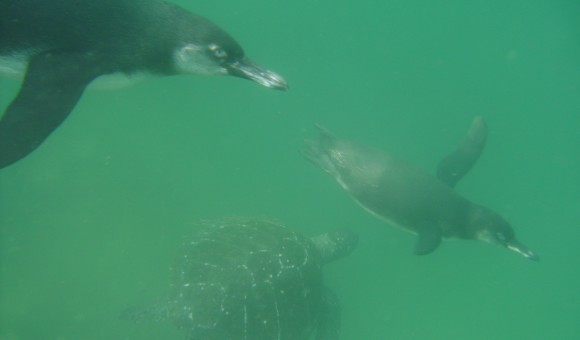
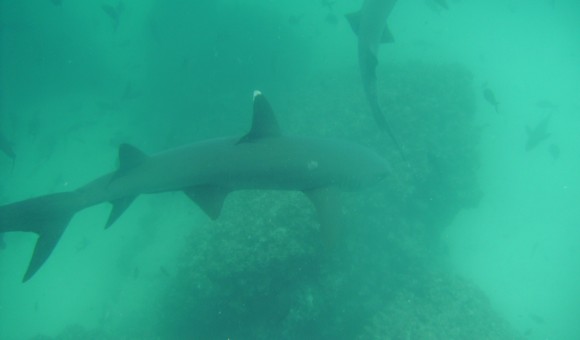
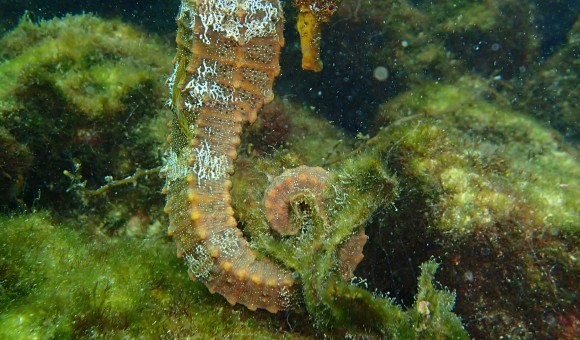
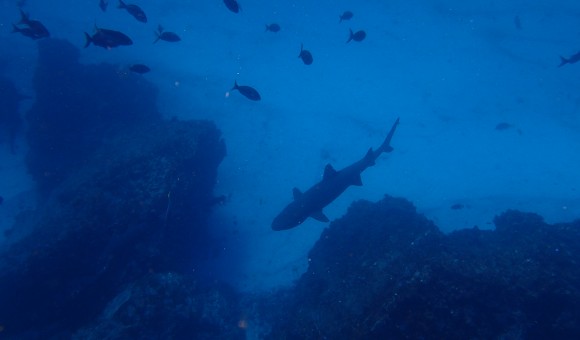
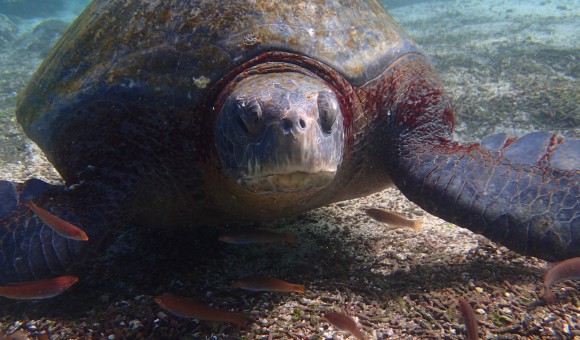
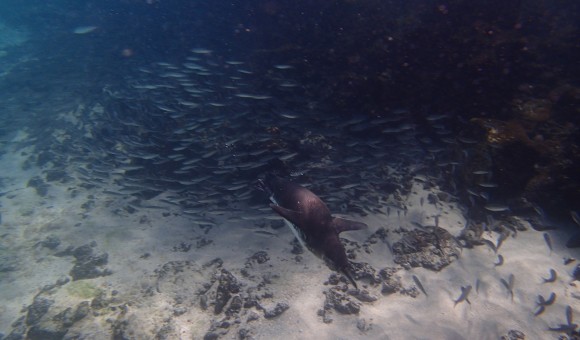
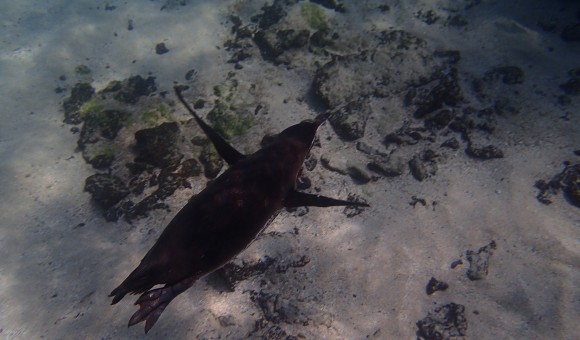
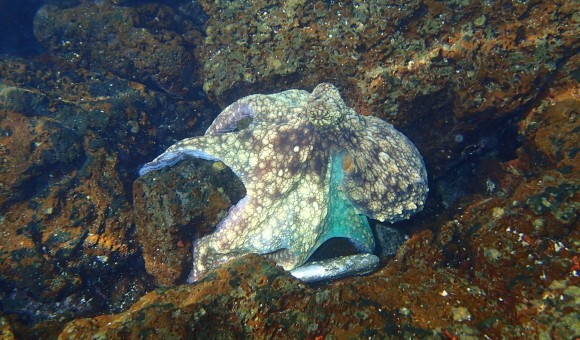
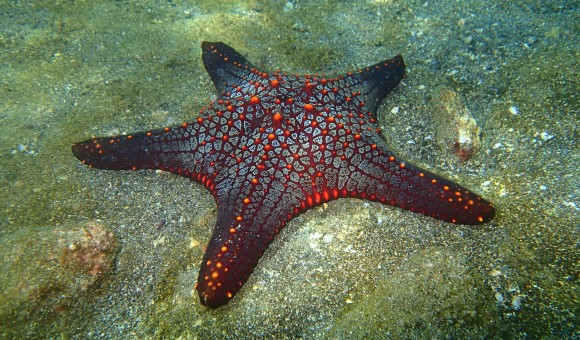
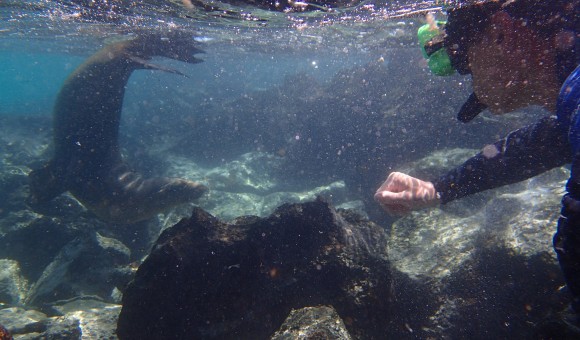
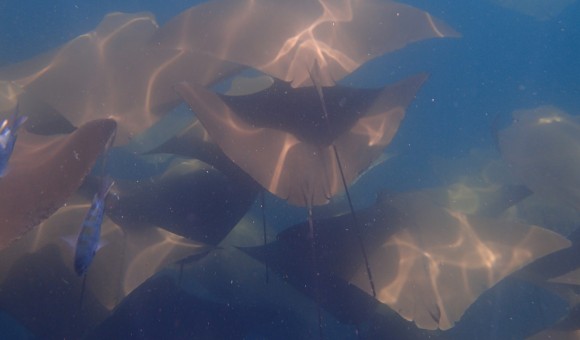
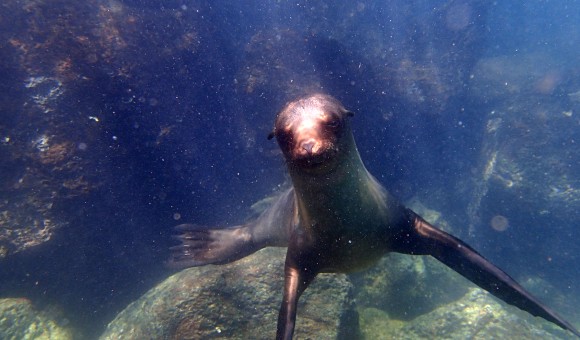
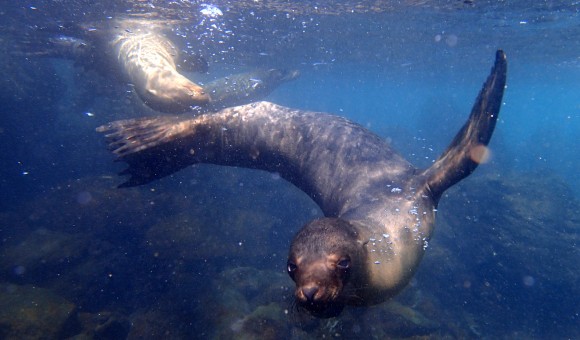
Dag Duik trips
Wil je enkele duiken maken op de Galápagos, dan kan dit met dagduiktrips. Native & Green kan optreden als bemiddelende partij, waarbij wij geen enkele verantwoordelijkheid kunnen nemen voor de duiken zelf. Wij werken alleen met de beste duikscholen van de Galápagos, die verantwoord met mens, natuur en materiaal omgaan. Deze dag duiktrips worden georganiseerd vanuit Puerto Ayora op Santa Cruz. Je overnacht in een hotel in Puerto Ayora en kunt een gewenst aantal dagen dagduiktrips maken, naar mooie speciale duiksites.
Deze trips moeten van te voren worden geboekt. Het risico is te groot dat het vol zit of dat je juist de enige bent. Als je vroeg boekt heb je vaak nog keus voor de duiksite. Bovendien zullen anderen dan ook sneller gestimuleerd worden om juist op die dag(en) in te schrijven, waardoor er voldoende inschrijving is. Voor meer informatie over deze verschillende sites zie ook: Duiksites.Hotelovernachtingen en aansluitende vluchten kunnen wij uiteraard allemaal verzorgen.
Live Aboard duikreizen
Wil je speciaal naar de Galápagos om te duiken dan kun je denken aan een liveaboard duikreis, een dag of 11 op een boot met iedere dag duiken, onder meer naar de ver gelegen unieke duiksites bij Darwin en Wolf. Hier zijn onder meer grote groepen haaien te zien en tevens de befaamde walvishaaien. Er zijn maar enkele boten die liveaboards uitvoeren en het is vaak gauw vol, dus wees op tijd!
Niet meer mogelijk: Landexcursie reis met enkele duiken
In het verleden werden er wel eens duiken aangeboden vanaf een landexcursie boot, maar dit ging niet altijd verantwoord en is nu verboden. Wel bieden sommige landexcursie boten de mogelijkheid om ergens te duiken, maar let op! Weet dat er dan een duikschool naar de boot toekomt om die dag te verzorgen. Je mist die dag dan dus de landexcursies (waarvoor je betaald hebt) en betaald extra voor de duiken. Dit zijn niet per se de beste duikplekken, maar alleen plekken in de route van de cruise waar gedoken mag worden. Kortom, beter is om voor de cruise aan enkele nachten in een hotel te blijven en een of meer losse dagduiktrips te doen met een duikschool.
Hieronder meer informatie over het duiken, we geven de info in het Engels, rechtreeks in de bewoordingen van een van de duikscholen, om verloren info in een vertaling te voorkomen:
If we could define Galapagos diving with just two words, we would say fabulous and unpredictable – fabulous because of the abundant marine life and unpredictable because of the variable oceanic conditions.
Marine Life
The Galapagos marine life is so varied, tame, abundant and amazing that the islands are considered one of the Seven Underwater Wonders and the best diving destination of the World. Galapagos divers encounter thousands of fish (both big and small), sea lions, rays, turtles, morays and garden eels. It is almost a guarantee that divers will meet harmless white tip and hammerhead sharks. In some places, divers can see dozens of hammerheads, snorkel with dolphins and – during the right season – meet a whale shark.
Finally, the islands are the only place in the world where people can dive with a marine iguana or watch sea lions teasing white tip sharks by biting their tails.
The richness of our sea life is mainly due to cold water that comes up from the deep and brings nutrients to the light zone, producing large amounts of phytoplankton that start the food chain. The diversity of species is mainly due to the position of the Galapagos at the crossroads of the main East Pacific equatorial currents. Here, tropical and semi-tempered waters meet, bringing animals from all over the Pacific and some parts of the Indo-Pacific. The variety of marine habitats (sandy, rocky, coralline, muddy) and the large area of the archipelago’s waters also contribute to biodiversity.
Diving Conditions
The Seasons
We have 2 seasons: the warm and sunny season from December to May and the cool and cloudy one from July to September. June and October are transitional months. During the warm season, there is almost no wind, so the sea is usually very calm and the visibility tends to be better. In the cool season, there is more wind, the sea can be choppy and the visibility is lower.
Water Temperature
Although the islands are very close to the Equator, water temperatures range from 16° to 24° Celsius in normal years; we use full 5 to 7 mm (¼ inch) wetsuits all year and hoods in the cold season.
Visibility
In general, visibility ranges from 5 to 25 meters, but most of the time it is restricted to between 12 and 18m. A large submarine current (the Equatorial Undercurrent) from the West Pacific hits the largest island of the archipelago (Isabela Island) and is deflected upward until it reaches the surface, bringing up cold and nutrient-rich water; this movement can change the water temperature by as much as 6° Celsius and change the visibility in a matter of one or two days.
Experience
Beginners: Newly certified divers or divers with few dives logged (3 to 15 dives)
Intermediate: 15 to 50 dives logged with experience in cold water and with drift and wall diving
Advanced: 50 + dives logged, with experience in cold water and with drift and wall diving
Detailed description of dive experience is always necessary to confirm a dive program (please check Liability Release / Experience Assessment Forms in this manual, p. 32/33) . A diver with 10 dives in cold water and currents may feel a lot more comfortable than a diver with 40 logged dives in warm water and little current. Or a newly certified diver may feel more comfortable than a diver with 50 logged dives who has not been diving for 6 years.
Our Diving
We have great dive sites for beginner, intermediate and experienced divers, although the best dive sites are usually the most difficult ones and have significant to strong currents near vertical walls. Most of our diving is drift diving, so the dive masters’ skills play an important role. Beginners can start in the easier places and proceed to the more difficult ones under the guidance of our dive masters or instructors. On all our dives, our dive masters actually dive in the water with the customers.
There is no insurance included in the programs and we highly recommend that all divers have their DAN insurance before coming to the Galapagos (costs per year for Standard Insurance US$ 69 and for Master Insurance US$ 79 including the annual membership). We can provide you with the necessary information to acquire this insurance or you can visit www.diversalertnetwork.org
RECOMPRESSION CHAMBER OPERATING IN GALAPAGOS
As of July 2001, the first recompression chamber ever to have been installed in the Galapagos Islands has been successfully treating sea cucumber fishermen with either DCS or AGE. This chamber is run with a small hyper baric clinic by Dr. Gabriel Hidrovo, a hyper baric physician with postgraduate studies in France and Dr. Lopez; Dr. Hidrovo, an Ecuadorian citizen, is as well a GNP certified Naturalist guide and a PADI Instructor. Dr. Hidrobo and Dr. Lopez work along with their team of chamber operator/technician, nurse and administration manager.
The dive tour operators of the Galapagos Islands feel the operation of the chamber will have a major and positive impact on the development of underwater ecotourism safety and resources preservation.
The chamber is owned by a company named: PROTESUB S.A., who is in turn a branch for SSS Recompression Chamber Network, a privately owned company operating recompression chambers throughout the world, especially on remote diving destinations such as the Galapagos.
The technical information of the chamber follows:
BRAND: SISTEMI IPERBARICI INTEGRATI (ITALIAN)
MODEL: 1.300 MAX. WORKING PRESSURE: 7.5 BAR BUILT: 1992
DESCRIPTION OF DIVE SITES
Hieronder volgen enkele van de duiksites
Duiksites op Live aboards:
El Darwin’s Arch (Darwin)
Though being one of the eye-catching landmarks of the Galapagos Islands, only a few can truly admire the sculpture of Darwin’s Arch themselves. The monumental portal is not even the real highlight, of which treasure is hidden beneath the breakers that splash against the shallow reef platform. Long-cherished dreams often come true at this world-class underwater theatre. It is an outstanding hotspot
for schools of scalloped hammerhead and, particularly, whale sharks.
This largest fish in the world has almost the size of a bus and let divers get up close and personal. Almost all whale shark encounters happen frequently between June and November around this arch in the far north of Galapagos, where often-pregnant females make a brief stop-over during their mysterious solitary migration, with remora suckerfish as their sole fellow travellers.
Darwin’s Theatre (Darwin)
Two forked ridges point from the reef foundation of Darwin’s Arch to the Northeast and to the Southeast. Beneath the splashing waves, curved shelves bend around the northern branch, which is illustratively
called “Darwin’s Theatre”. It features a genuine grandstand with panoramic hangouts at about 18 m/60 ft, right above the edge of the deep drop-off wall. The exposed, barnacle-covered rocks are the perfect seats to enjoy the upcoming aquatic show, but as soon as one of the expected celebrities makes its grand entrance, every diver hurries into the blue to keep up for a while.
Even if there isn’t any whale shark on the move, the usually endless parade of extraordinary marine fauna swarms by, which includes schools of sometimes hundreds of hammerhead sharks, patrolling Galapagos requiem sharks, incidental silky sharks, and likewise, hunting yellow-fin tunas, wahoos, bonitos, amberjacks, as well as massive pelagic schools that transform into whirling bait balls when hunted.
El Arenal (Darwin)
Sharks, turtles and jacks visit cleaning stations all around Darwin’s Arch, to be freed from parasites. They maintain an incredible symbiotic relationship with the resident barber fishes and king angelfishes. The busiest area is usually the sandy slope right in front of the portal, known as “El Arenal”. If the surge is not too strong, it is possible to be dropped off in these shallows, amidst dancing clouds of creolefish, to come face-to-face with individual and small groups of scalloped hammerhead sharks, as well as resting Pacific green turtles and rare hawksbill turtles in between hundreds of garden eels stretching up and plenty of colorful starfish.
Further out, the sloping shelves with rubble that drop into a deep gully form the curved contours of the reef platform. The upper edge offers more hideouts between the rocks to observe approaching
hammerheads. Located only 100 m/110 yd around the corner of Darwin’s Theater, there are new lifetime opportunities to swim with majestic whale sharks, or to wonder about all marine life that comes with the flow. Did we already mention bottlenose dolphins, Mobula devil rays, and giant oceanic mantas (depending on the season)?
Shark Bay (Wolf)
Shark Bay, located on the exposed east coast of Wolf, is shallower than most sites around, yet for many the most memorable. Besides being another spot where sharks galore, local cleaning stations reveal fascinating symbiotic relationships. Critically endangered hawksbill and Pacific green turtles visit busy king angelfishes. Cleaner fishes also groom spotted eagle rays and even hammerhead sharks.
In these shallows, individual male hammerheads tend to approach motionless divers closer than schooling females in open water do. Their reluctant character is quite opposite to the curious Galapagos
sea lions, that immediately look for company and love to interact!
The Landslide (Wolf)
The Landslide is the premium dive spot of Wolf Islet. Looming silhouettes of dozens, seasonally even hundreds of hammerhead sharks circle around or head against the currents, preferably when
these currents are strong. Ending up the blue-water safety stop right into their middle might even give you an extra rush of adrenaline! This exciting drift dive follows a boulder slope underneath the
partly-collapsed east cliffs of the islet. Find a hangout between the boulders to stay for a while, and hold the barnacle-covered rocks firmly while the current flows by. Beware that well-camouflaged
scorpionfishes, abundant white-spotted moray eels, and whitetip reef sharks also hang around! Some beautiful pavona corals are an example of Indo-Pacific influences around these northern islets.
Wonder about the ever-changing parade of hammerheads, awesome Galapagos requiem sharks, pelagic schools, and many more species that are easily overlooked in these surroundings. Clicks and whistles indicate that bottlenose dolphins are also not far away. The hot season usually brings lots of Pacific green turtles, majestic formations of spotted eagle rays, and, if lucky, Mobula devil rays and giant oceanic mantas.
The Pinnacle and The Caves (Wolf)
This area has some of the best caves in the Galapagos and an exciting experience at The Pinnacle, and it’s located on the northern tip of the main island. It has four good underwater caves that penetrate into the wall of the islet and are easily accessible, although the current can get a bit strong from time to time, from south to north. All the entrances to the caves are at depths of 15-21 m/50-70 ft, and there is a sandy ledge that runs along the wall below the entrances. Hawksbill and green turtles usually gather in this area, hanging around the opening or swimming in and out. The fourth cave has the largest opening, with an entrance at 18 m/60 ft, and can also be interesting to explore if you have the time. In general, the
large variety of life around and in the caves includes schools of soldierfish, guineafowl puffers, moray eels, whitetip reef sharks, marble rays, cardinalfish, and lobsters hiding in holes and cracks.
The dive ends in the northeastern corner of Wolf at a tall and massive underwater pinnacle, of which the top is barely below the surface of the water. The main current comes from the southeast, but there can
also be other currents coming from different directions at varying depths, creating sort of a whirlpool effect. If the currents allow it, you can swim across the gap to the pinnacle, grab on, and watch the
bubbles to see how the currents are behaving. Here you can watch for large pelagic species, like hammerhead and Galapagos sharks, bottlenose dolphins, and turtles.
The Secret Cave – Night dive (Wolf)
The Secret Cave has its origins in gas chambers that date back to the formation of the island that eroded and collapsed with the passing of time. It is a great alternative on the northern side of Wolf if the conditions allow you to dive here. Along the wall, sometimes with hammerheads, we find the entrance into a cave that may reveal several nocturnal species, such as cardinal fishes, spiny lobsters, shrimps, colorful sea urchins, hunting moray eels, as well as Pacific green turtles and sea lions.
Anchorage – Night dive (Wolf)
The Anchorage of Wolf is the only dive site located at its sheltered west coast. The cove and surrounding cliffs reveal outlines of the former main crater of this extinct volcanic islet. Leeward, water temperature is higher and the turbulent currents and treacherous swell of the surroundings are hardly felt anymore. Nevertheless, some sharks and reef fish may be spotted during the surface intervals back aboard, as well as blue-footed boobies.
Those who dare another, quite different adventure during these intensive days, may opt for a dark and exciting night dive. Right beneath the anchored yacht, walks and hops the weird red-lipped batfish with its leg-fins on the 20 m/70 ft deep sandy bottom. Though active at night and attracted by your light’s beam, this chilly activity probably won’t be the only opportunity to marvel at this endemic Galapagos species
Vicente Roca Point (Isabela)
Right at the mouth of the seahorse that Isabela Island looks like is Vicente Roca Point. The roaring echoes of the waves will accompany you as you enter a dark cave under a spectacular arch. Just around the corner, the collapsed amphitheatre of Ecuador volcano offers another impressive sight. The calmer waters of the caves are well protected from the ocean swell and are a great place to dive amongst various species of sharks, penguins, pufferfish, and even seahorses. Encounters with sunfish are also very common, and it is convenient to keep in mind that the water in this area is usually a bit cold.
Cape Douglas (Fernandina)
Cape Douglas is sure to provide you with incredible opportunities to observe an abundance of marine life, above and below the water. As you prepare for the dive, you can see Galapagos penguins, flightless
cormorants and Galapagos marine iguanas, animals that are only found exclusively on these islands. We will also go looking for incredible marine iguanas swimming and feeding on the rocks below the surface. Some of the marine life forms you can see are the red-lipped batfish, horned shark, sunfish, and possibly whales!
Duiksites in Dagduiktrips:
Floreana
Location: South of Santa Cruz Island, 3 possible dive sites, 90 minutes away from our base.
Site Conditions: Divers should be alert for changeable currents. Some sites are reef dives where corals and sponges can be found and others are wall dives.
Activity: Most of the interesting activity takes place in the shallows where the current strikes the reefs. Cleaning station, sea lions, Galapagos sharks, white tip reef shark, green turtles, reef fishes, sting rays, eagle rays, barracudas, variety of invertebrates.
It is one of the older volcanic islands, and has an uneven profile that is the result of numerous volcanoes and parasitic cones. First island to be inhabited by humans.
Floreana presents an excellent selection of varied dive sites and a few official visitor sites. (Punta Cormoran, Enderby and Champion)
Site Conditions: This rock formation is a world renowned site, for intermediate and advanced divers due to the strong currents and surge.
Activity: Hammerhead shark, Cleaning station, Galapagos sharks, white tip reef shark, mobulas rays, turtles, reef fishes, sting rays, eagle rays, Galapagos eel, barracudas, variety of invertebrates.
Location: Gordon Rocks is one of the best dive sites in the central islands. It is an eroded crater at the top of a tuff cone. Near the east coast of Santa Cruz Island, 2 dive sites located 45 minutes from Itabaca Channel (North side of Santa Cruz Island).
Site Conditions: For all levels of divers, although sometimes there can be strong currents. Platform reefs with a diversity of species.
Activity: Cleaning station, sea lions, and many kinds of sharks including Galapagos, white tip reef and hammerhead, mobula rays (small mantas), turtles, reef fishes, sting rays, eagle rays, Galapagos eel, barracudas, variety of invertebrates.
Location: North of Santa Cruz Island, 2 dive sites located 30 minutes from Itabaca Channel (North side of Santa Cruz Island).
Site Conditions: Normally there are no strong currents at this site, a sandy bottom between 15 and 18 metres with garden eels and pelagic species, There is also a wall that starts at 18 metres where we find black coral and variety of invertebrates.
Activity: Hammerhead sharks, black tip reef shark, white tip reef shark, sea lions, turtles, barracudas, reef. fishes, sting rays, eagle rays, mobula rays, Galápagos eel, variety of invertebrates.
Location: North of Santa Cruz Island between Seymour Island and Baltra Island, this low rocky islet holds sandy beaches where sea lions rest. The one dive site is located 25 minutes from Itabaca Channel (North side of Santa Cruz island).
Site Conditions: Normally there are no strong currents at this site. It is a reef dive with many corals and sponges.
Activity: Cleaning station, sea lions, Galapagos sharks, turtles, reef fishes, sting rays, eagle rays, barracudas, variety of invertebrates, manta rays and probably solitary hammerhead sharks.
Location: Off the south coast of Santiago island. Beagle Rocks are three large, steep rocks, the only remains of a tuff cone. About 90 minutes from Itabaca Channel (North side of Santa Cruz Island).
Site Conditions: Moderate currents at this site, a drift dive along the impressive drop-off at the top of a sloping wall, rocky and sandy bottom.
Activity: Here we find a small cave (this is NOT a cave dive) where white tip reef sharks rest, additionally there is a pinnacle where we find a diversity of rays, Galápagos shark, turtles, reef fishes, barracudas, black coral walls and variety of invertebrates.
Location: Near the north coast of Santa Cruz Island, a big flat-topped exposed rock. It is an eroded tuff cone. Located 30 minutes from Itabaca Channel (North side of Santa Cruz Island).
Site Conditions: moderate current, is a platform at about 10 meters (33ft) deep with enough variety of reef fishes. We also find the edge of this platform a submarine canyon from 15 meters (50ft) deep with chance encounters pelagic species.
Activity: white tip shark fin, reef fish, barracuda, turtles, modula rays, stingrays and a variety of invertebrates and mollusks.
Location: Located at the east side of Santiago Island, a small island where we see the famous pinnacle rock of Bartolomé, located within 90 minutes from the Itabaca Channel (north side of the island Santa Cruz).
Site Conditions: Under normal conditions no strong currents, diving is on a shelving reef, with many endemic black corals on the walls.
Activity: Cleaning station, pacific seahorses, barracudas, sea lions, Galapagos shark, white tip shark, sea turtles, reef fish, stingrays, spotted eagle rays, and a variety of invertebrates and mollusks.
Location: Located on the east coast of Santiago Island near the island of Bartolome, within 90 minutes from the Itabaca Channel (north side of Santa Cruz). It is a triangular-shaped islet.
Kicker Rock
Kicker Rock are two basalt monoliths. This is one of the top dive sites in Galapagos, accessible from San Cristóbal. Snorkel activity is also performed in the channel that separates the two large rocks.
Site Conditions: Normally no strong currents, the background to the sides of the rock is very deep and in the middle of the channel reaches have a depth of 19 meters.
Activity: This is the best place to see the Galapagos shark, hammerhead shark, sea turtles, stingrays, puffer fish, and large quantities of fish. It is also possible to see spotted eagle rays, flying rays, stone scorpionfish, harlenquin wrasse, Black tip reef shark, Tuna, schools of yellowtail grunts, jacks, barracudas, rainbow runners, salemas, barberfish, creolefish and flag cabrilla. On the rocks you will find black coral, nudibranchs, urchins, octopuses, multi-color sponges and crustaceans. The back side of Kicker Rock it is possible to encounter schools of hammerheads! The currents around the rocks and in the channel are very mild, so it is safe for diver initial level.
Location: Located 2 hours northwest of the island San Cristóbal. The rocks are in the shape of a sleeping lion therefor the name in Spanish is Leon Dormido.
Nationaal Park
Het Nationaal Park is verantwoordelijk voor het vaststellen en controleren van regels op de Galápagos. Zij gaan ook over het duiken. Vaak wordt pas per januari vastgesteld hoe de planning is voor het nieuwe jaar. En ook dan kan het nationaal Park altijd beslissen dat een bepaalde site tijdelijk niet bezocht mag worden, of minder frequent. Per duikschool worden hiervoor licenties afgegeven.

